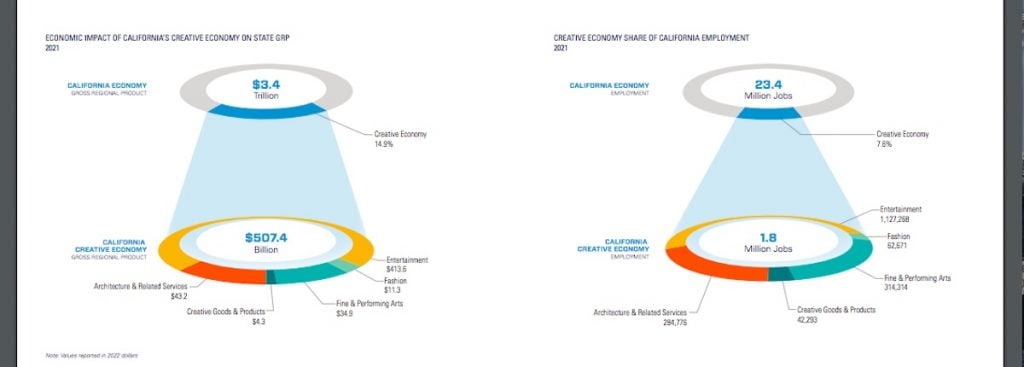Analysis
California’s Creative Economy Has Made a Spectacular Post-Pandemic Rebound, According to a New Report
It also outperformed the overall economy.

It also outperformed the overall economy.

Eileen Kinsella

A new report on the creative economy in California offers some surprisingly good news.
The latest edition of the “Otis College Report on the Creative Economy,” an annual study from the Los Angeles arts school, found that the state’s creative economy outperformed the overall economy in its recovery from the pandemic—despite the disproportionate impact on cultural sectors.
Overall, the creative economy directly contributed 14.9 percent ($507.4 billion) of the state’s $3.4 trillion economy, and 7.6 percent of its jobs.
Each year, the report tracks the creative economy of the city and state across five sectors: entertainment; fine and performing arts; architecture and related services; creative goods and products; and fashion. The report also contrasts Los Angeles County with New York City, as the creative economic centers of the United States recover from the pandemic.

Source: Otis College Report on the Creative Economy, 2023.
Another key finding shows that California’s creative economy supported over 5.1 million workers, accounted for $978.6 billion in total economic activity, and generated $194.1 billion in taxes—a significant jump compared to last year’s report. In 2022, there were just 3.9 million workers and the creative economy accounted for $687.6 billion in total activity and $128 billion in taxes.
The report finds that in recent years the video game industry has experienced “explosive export growth”—up by more than 54 percent between 2017 and 2021—highlighting the growing global consumer demand for California’s creative economy.
One category of discretionary goods that grew more popular during the pandemic was cosmetics, and especially skincare. In California, employment in the cosmetics sub-sector was 8.3 percent above pre-pandemic levels in 2021 as people continued their interest in self-care.

Source: Otis College Report on the Creative Economy, 2023
Entertainment, the largest creative sector in California, showed the most significant employment growth, outperforming the recovery of the creative economy overall. For example, after a 13 percent drop in 2020, motion picture and video production industry employment in L.A. County rebounded 19 percent from 2020 to 2021.
Architecture also outperformed the creative economy overall. Los Angeles County reversed a declining employment trajectory in 2020, which could be partially due to Los Angeles’s successful bid to host the 2028 Olympic games, and the resulting mobilization of workers needed to build infrastructure.
“The past three years have been a period of reflection and adaptation,” read a statement accompanying the report, “which yielded an important insight: the economic value of the creative sectors extends far beyond the production of artistic and cultural goods or the employment of creative people.”
More Trending Stories: